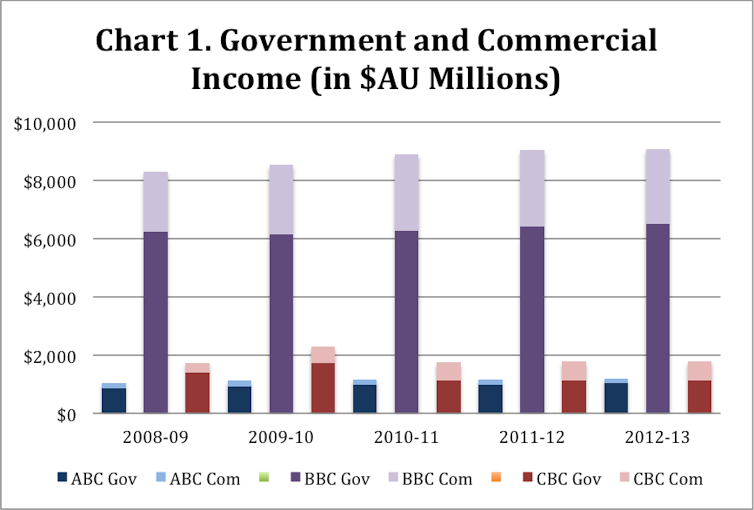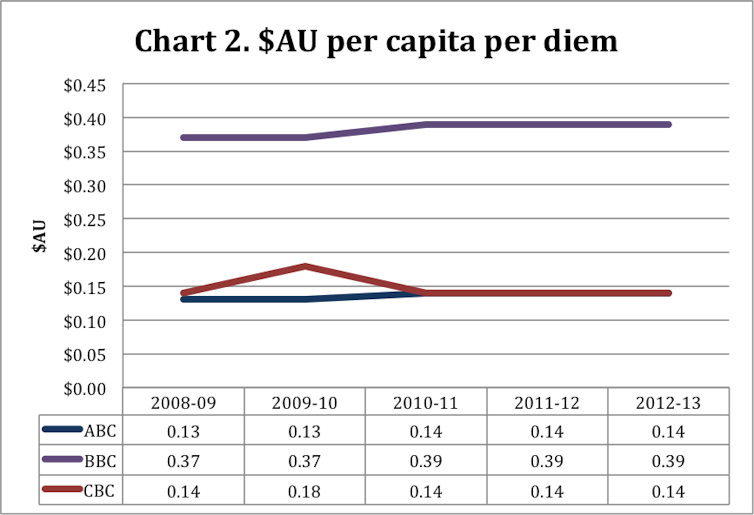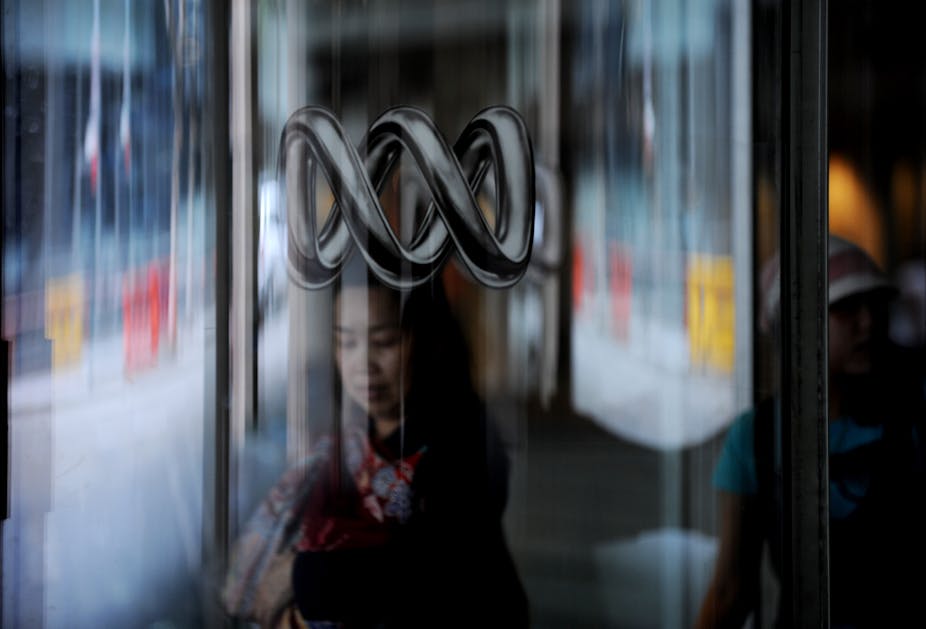Due to Australia’s small population and high concentration of few media voices, public broadcasters play a pivotal role in shaping the media ecosystem and cultural landscape. With the ABC and SBS under scrutiny ahead of the budget, The Future of Public Broadcasting series looks at the role of these taxpayer-funded broadcasters, how they shape our media and whether they provide value for money.
A tough federal budget round is looming and the ABC’s government funding is reportedly set to be cut. Campaigning for a leaner ABC are elements within the Liberal Party and commercial media such as The Australian, which has previously drawn attention to the high salaries paid to the ABC’s top presenters and managers.
But you don’t need to work for The Australian to question the apparent profligacy reflected in some of those salaries, or the need for the ABC to be involved in the provision of quite so many digital and online services. These could, some argue, be provided more efficiently by the private sector.
The media environment has changed fundamentally with digitalisation, and the cosy assumptions of the analog era about the untouchability of public service media are, in 2014, the legitimate subject of challenge and debate.
We recently speculated what Australian television would look like if the ABC did not exist. But let’s now ask the approximately A$1 billion question – for that is the sum the Australian taxpayer shells out to fund the ABC every year – is the service delivering value for money, or not? Does it represent a good return for the resources allocated to it?
One relatively objective way to look at answering these questions, which seems reasonable given the tone of the criticism that the ABC receives from some in the private sector, is to compare its costs against those of commercial rivals.
Pay TV service Foxtel offers access to nearly 100 channels and a wide range of interactive services. The cost of a Platinum package – which includes access to 90 channels, on-demand movies, some channels in high definition, recording facilities and catch-up TV – is A$124 per month (plus installation and equipment fees), or nearly A$1500 per year, or just over A$4 a day.
Subscribers can watch up to 60 Foxtel channels on devices such as iPads and iPhones with the Foxtel Go app, and set programs to record remotely from anywhere in the world. Some of Foxtel’s content is produced in Australia, though most is imported from overseas. Some is cheap as chips to supply, some very expensive.
Either way, millions of Australians are prepared to pay those few dollars a day for the package.
The ABC received A$1,030 million in the May 2012-13 federal budget, supplemented by an additional A$158.2 million from commercial and other income streams.
Per capita, this works out at the sum of 14 cents a day for every man, woman and child in the country. That is about 1/25th of the daily cost of the top-line Foxtel package. For that, the Australian media consumer gets four TV channels, national and local radio and online content.
It’s not straightforward, or even fair, to directly compare the ABC’s low-cost provision with the multichannel smorgasbord of Foxtel sport, movies, news, entertainment and the rest. But who can seriously maintain, given around 2.5 million Australians pay nearly hundreds of dollars a year to Foxtel, that 14 cents a day for the ABC’s content is excessive?
Comparing the ABC with public broadcasters overseas reinforces this point. Charts 1 and 2 show the annual per capita cost of the ABC against its Canadian and UK equivalents. While the ABC costs almost exactly the same per head of population as the Canadian Broadcasting Corporation (CBC), it is just over one-third the cost of the BBC, calculated on the same basis.
In 2012-13, the cost per capita per day of the licence fee in the UK (which funds the BBC’s operations) was 21 pence, or around 39 cents, as against the ABC’s and CBC’s 14 cents. However, unlike its British and Australian counterparts, the CBC uses commercial advertising on TV to supplement its government funding.


In short, even by the standards of public service media, the ABC is quite a lean machine.
One example shows how: in the UK, when invited on to a BBC radio or TV show to comment on a topical issue, as we academics are from time to time, guests receive automatically an appearance fee (around £30-100 for a few minutes, depending on the size of the audience for the program) and a complimentary taxi to and from the studio (perhaps another £50 in total).
In Australia, academics are expected to do this commentary work for free, as part of our professional role. The ABC thereby saves millions of dollars per year in contributor costs. Across the board, the BBC is a much more luxuriously funded organisation.
None of this would matter very much if the quality of ABC content and services did not satisfy the audience. But there is clear evidence that the output produced for those 14 cents per day is valued.
Not only does ABC content reach broad swathes of the Australian public – ABC online reaches 22% of the market; city metro radio reaches 24.4%; ABC TV has around 20% in both metro and regional markets – but a 2013 Newspoll survey found that 78% thought ABC TV content was “good”. In the same poll, 86% regarded ABC online content as “good”.
None of this should serve as an argument for leaving the ABC to its own devices. Its costs, and the range of activities it engages in, must be justified in terms of its public service remit. But let’s once and for all scotch the myth that the ABC is too big and too expensive for an affluent democracy such as Australia.
Read more articles in The Future of Public Broadcasting.

